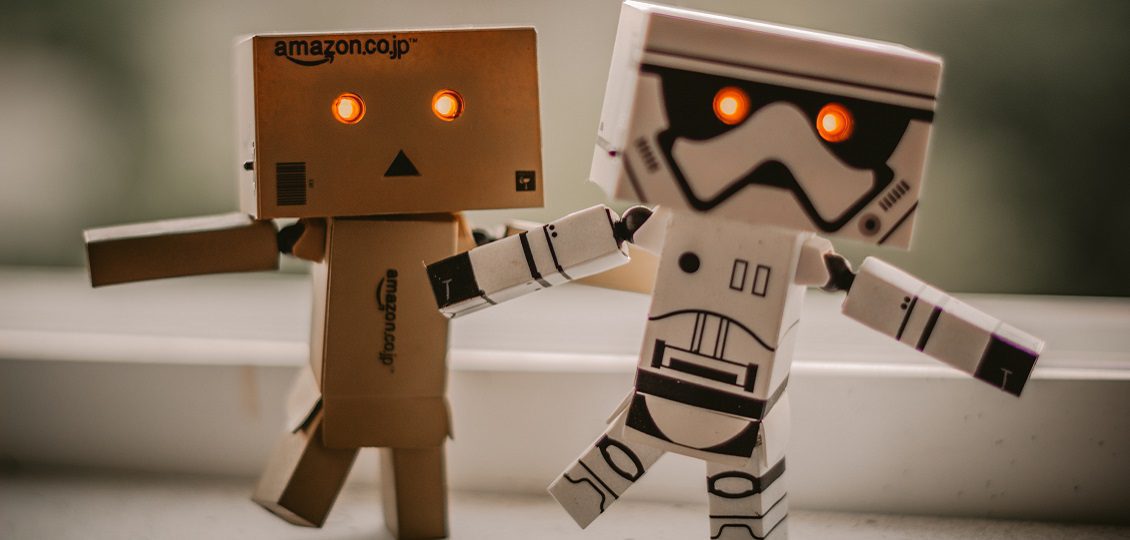By Mat Baker, i-Recruit
Have you heard? Robots are coming for your job. Yes. You. Maybe. There’s no need to press the panic button, though. Employment is fluid, and it always has been.

There are robots and there are bots. Robots have been around and replacing people for over thirty years, although recent developments in technology means that they have left the factory floor and are cropping up everywhere. Literally – the Hamster Bot Rosphere can be found in farmers’ fields right now, carefully making its way through fields and sending back information about the health and well-being of the growing crops. The Herd Bot “Rover” is starting to replace sheep-dogs, believe it or not. Poor old shep. He might find it a bit more difficult to re-skill.
Hospitals and care homes are trialling machines like the Ro-bear and the somewhat unimaginatively named Care-o-bot to undertake menial, repetitive tasks and a fascinating one called Pepper can, apparently, recognise emotions and pitch itself appropriately. As clever as Pepper sounds, I have some concerns about machines and faux-emotional responses. Buddy, from Blue Frog Robotics, is pitched as a companion for kids or seniors, and whilst such solutions are certainly better than nothing, what are the ramifications of children being regularly babysat by a robot? It might be suggested as a temporary solution to be used sparingly, but I can’t help feeling that this has the propensity to escalate quickly.
Let me get off my high horse for a moment, though. Putting childcare issues to one side, I think that these robots do have a role to play in caring for an ageing population. It isn’t ideal – surely – but it would be lazy to summarily dismiss such technology because it is pragmatic and clinical. There are tens of thousands of vacancies in medical and care work, and vulnerable people are the ones that pay the price for this. Robots can bridge this gap, although economic considerations will mean that this transition – if indeed that is what this is – will not happen quickly. Robots are expensive.
I have touched on the concept of “future-shock” in blogs before. There are already modern realities that would have been the stuff of fanciful sci-fi stories a few decades ago (air quality warnings, anyone? Global warming?), and it doesn’t take the most active of imaginations to envisage where a world with robotic care-givers might lead us. People need a variety of emotional nourishment, and I am not sure that machines will be able to adequately give them this. And even if they can be programmed to fake it, will human beings buy into it enough?
And we’re back to ethics again. It’s going to keep coming up as AI becomes more prevalent, and trust me, AI is going to become more prevalent. And the real issue here is that we often don’t become truly aware of the problems caused by technology until the stable door has been open for years, and the horse has bolted to another continent entirely. Profit comes first. Solutions second, at best. And the responsibility for ethically developing artificial intelligence lies where, exactly? With private companies? Governments? The UN? This diffusion of responsibility does not auger well.
Right, we’ve dealt with robots, but now we need to deal with the real culprits when it comes to replacing people: the bots.

Consider this:
Before the typewriter was invented (1843, if you’re interested, but it took another three decades to take off), everything that was written was done by hand. And before the photocopier came along (1938, two decades this time), if you wanted a copy of a document, it had to be done manually. Before adding machines (1642, believe it or not, but they weren’t patented and commercially produced until 1888) were conceived, calculations were via a pen, paper and grey matter.
I expect you can see where I am going with all of this. Technology has been streamlining administrative functions for centuries. Devices that save time (and are more accurate and reliable) are an integral part of the workplace. Do you use spreadsheets? They are everywhere now, and have been for some time, and think of the administrative burden that they relieve. This kind of progression is normal and natural, and AI robotic processes are just the 2018 version of this. Yes, they will cost jobs, but they will create them too.
Opposition to this technology is naïve. And big business may be guilty of making mistakes, but fighting technological progress isn’t one of them.
The key here is to be on the right side of this equation, and industries, countries and educational systems that stay ahead of this curve will be the ones that prosper.
We’re i-Recruit, and we understand where the future lies.









